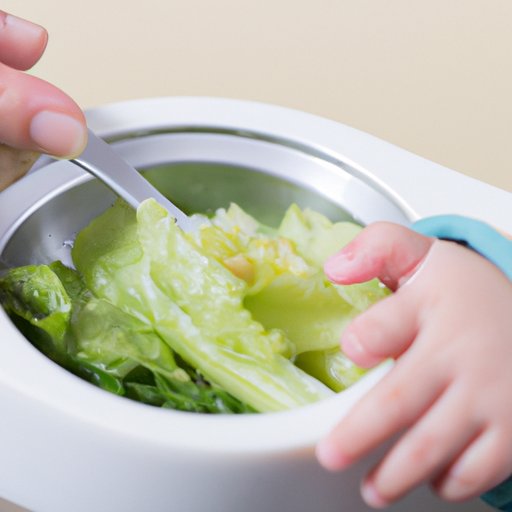
How to Wean Off Pumping: A Step-by-Step Guide
For many new mothers, pumping breast milk is an important part of everyday life. However, as your baby grows and your breastfeeding journey changes, you may want to start weaning off pumping. Whether you need to return to work or simply want to end your pumping routine, there are several ways to do so gradually and comfortably. Here is our guide on how to wean off pumping, step-by-step.
Gradual Weaning
Gradual weaning is the most popular method for ending pumping. This process involves slowly reducing the number of times you pump, usually over several weeks. By pacing yourself, you can give your body time to adjust and decrease milk production without too much discomfort. Here’s how to do it:
- Start by dropping one pumping session every 4-5 days. For example, if you’re pumping 5 times a day, drop one session on day 5, another on day 10, and so on.
- As you drop pumping sessions, increase the time between pumps. Instead of pumping every 3-4 hours, wait 5-6 hours between sessions.
- Continue this process until you’re only pumping once a day, and then once every other day. Eventually, you’ll be able to stop pumping altogether.
Remember to listen to your body, and adjust the weaning schedule if you experience significant discomfort or pain during the process. Here are some additional tips for dealing with discomfort:
- Applying hot or cold compresses to your breasts can help ease pain and swelling.
- Refrain from touching or massaging your breasts, as this can stimulate milk production.
- Wear a supportive bra that doesn’t put pressure on your breasts.
Cold Turkey
If you need to stop pumping quickly, the cold turkey method may work for you. This method involves stopping pumping completely and immediately. It’s important to note that this method can be uncomfortable and may increase your risk of engorgement or infection. Here’s how to do it:
- Stop pumping completely and immediately.
- Use ice packs or other remedies to decrease breast stimulation and ease discomfort.
- Wear a supportive bra to help ease breast engorgement.
Again, listen to your body, and contact your doctor or lactation consultant if you experience significant pain or other symptoms.
Reduce Pumping Duration
Another way to wean off pumping is to gradually decrease the amount of time spent pumping each session. This method can be helpful if you’re experiencing discomfort during pumping sessions, or if you want to decrease milk production slowly. Here’s how to do it:
- Start by reducing the pumping duration by 5-10 minutes per session.
- As your milk production decreases, you can continue shortening your pumping sessions until you’re no longer pumping.
Remember to pace yourself, and listen to your body. Rest and relax as needed, and seek support if you experience significant discomfort.
Substitute with Hand Expression
Hand expression is another method for weaning off pumping that many mothers find helpful. This method involves manually expressing milk, often using a cup or other container. Here’s how to incorporate hand expression into the weaning process:
- Start by using hand expression to supplement or replace pumping sessions. Try expressing milk by hand for a few minutes before or after a pumping session.
- Gradually increase the amount of time you spend hand expressing, and decrease the amount of time you spend pumping.
- By the end of the process, you should be using hand expression exclusively, or not at all if you’ve weaned off completely.
Remember to be patient, and take breaks as needed. You may also find that hand expression is more comfortable than pumping, so feel free to continue using this method for as long as it works for you.
Use a Cabbage Leaf
Using cabbage leaves to decrease milk production is an old wives’ tale that actually works. Here’s how to use cabbage leaves during the weaning process:
- Refrigerate a raw cabbage head, and remove the leaves.
- Place the leaves over your breasts for 20-30 minutes, or until they become wilted.
- Repeat as often as necessary to help decrease milk production.
Remember that this method can be messy, so wear an old shirt or cover with a towel. Additionally, do not use this method if you’re allergic to cabbage, or if you experience any adverse side effects.
Get Plenty of Rest
Sleep and relaxation are important during the weaning process, as stress can actually increase milk production. Here are some tips for getting enough rest:
- Take naps throughout the day, as needed.
- Avoid drinking caffeine at night, which can interfere with sleep.
- Practice relaxation techniques like yoga or deep breathing to reduce stress and promote sleep.
Remember, rest is essential for your body and mental health. Take care of yourself, and don’t hesitate to seek help if you need it.
Seek Support
Finally, don’t hesitate to seek support during the weaning process. Here are some resources to consider:
- Your doctor or lactation consultant can provide advice and help address any concerns.
- Mom groups or forums offer a place to connect with other mothers and ask questions.
- Lactation support groups and classes provide education and support for breastfeeding and pumping.
Remember, you’re not alone. Many women experience weaning off pumping, and there is support available. Take advantage of resources and stay positive as you navigate this process.
Conclusion
Weaning off pumping is a normal and natural process that many women experience. By using a gradual weaning process, cold turkey weaning, reducing pumping duration, substituting with hand expression, using cabbage leaves, getting plenty of rest, and seeking support, you can successfully wean off pumping. Remember to listen to your body, adjust your weaning schedule as needed, and seek support when necessary. We hope these tips help you have a comfortable and successful weaning experience.





